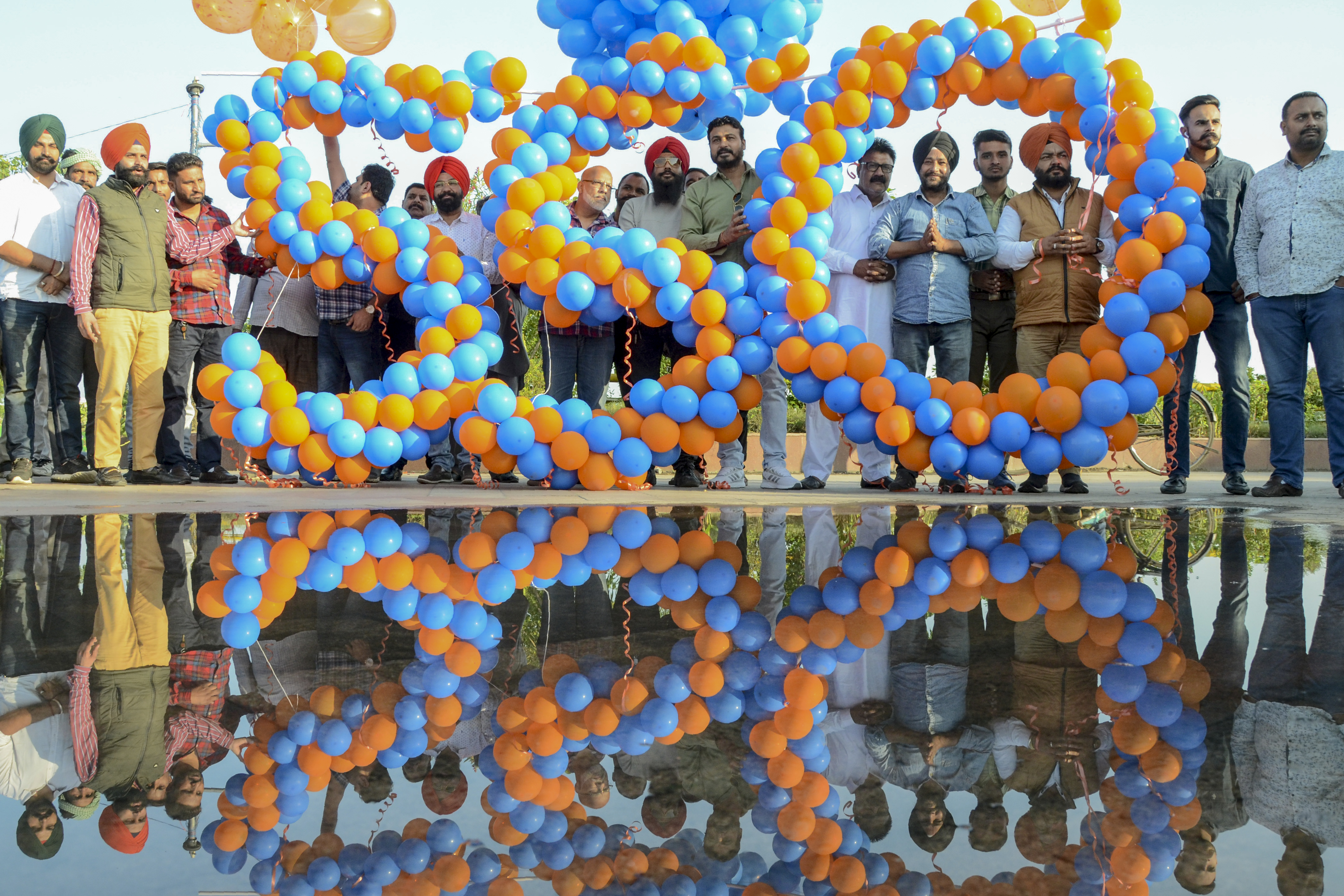
People hold balloons arranged in the shape of number 550, ahead of the 550th birth anniversary of Guru Nanak Dev, in Amritsar on November 8, 2019. – A corridor that will allow Sikhs to cross from India into Pakistan to visit one of the religion’s holiest sites is set to open on November 9, with thousands expected to make a pilgrimage interrupted by decades of conflict. (Photo by NARINDER NANU / AFP)
KARTARPUR, Pakistan — Hundreds of Indian Sikhs are set to make a historic pilgrimage to Pakistan on Saturday, traveling visa-free to one of their religion’s holiest sites under a landmark deal between the two countries separated by the 1947 partition of the subcontinent.
The shrine to Guru Nanak, the founder of Sikhism, lies in Kartarpur, a small town beside the River Ravi in central Punjab province where he is believed to have died.
For up to 30 million Sikhs around the world, it is one of their holiest places. When Pakistan was carved out of colonial India at independence from Britain in 1947, Kartarpur ended up on the eastern side of the border — though most of the region’s Sikhs remained on the other side.
For them, it is tantalizingly close — just four kilometers (two miles) inside Pakistan, so near that Indian Sikhs have been known to stand on the other side and simply gaze across the divide at the site.
But decades of enmity between India and Pakistan, nuclear arch-rivals who have fought three wars and countless skirmishes since independence, has left extreme restrictions on their ability to visit.
Until now, when — in a rare example of cooperation between the neighbors — a secure visa-free corridor will open Saturday allowing pilgrims to travel by road straight into the temple — known in Sikhism as a gurdwara.
The opening comes just days ahead of the Guru Nanak’s 550th birthday on November 12, which is marked with celebrations by millions of Sikhs around the world. The shrine will be one of the most important places for Sikhs on that day.
“This land is sacred for them,” Habib Khan, the 63-year-old imam of a small mosque just outside the gurdwara, told AFP on Friday.
At least 700 pilgrims are expected to pass through the corridor on Saturday, and more in the coming days.
Sikhs from around the world — including some from India, who entered from the main border crossing at Wagah after obtaining visas — have been arriving in Pakistan ahead of the celebrations for several days already.
Vans of pilgrims could be seen traveling through Kartarpur on Friday.
The Indian flag could be seen flying across the border, just beyond fields dotted with eucalyptus and guava trees — though it was half obscured by the heavy smog that has blanketed large swathes of South Asia in recent days.
The presence of Pakistan’s paramilitary Rangers lent a menacing edge to the otherwise peaceful scene. The rice-growing region, being so close to the border, is heavily secured, with multiple checkpoints.
‘This land is sacred’
Indian Prime Minister Narendra Modi will see off the first group of pilgrims later Saturday, and they will be welcomed by his Pakistani counterpart Imran Khan at the shrine.
The deal allows for up to 5,000 pilgrims a day to cross.
Pakistan has employed hundreds of laborers to spruce up the shrine, including building a border immigration checkpoint and a bridge, as well as expanding the site’s grounds.
Some residents in Kartarpur complained to AFP that the government had cheated them of land to expand the complex. Khan the imam said he understood their concerns, but that Sikhs had “every right” to visit.
The Sikh faith began in the 15th century in the city of Lahore, which is now part of Pakistan, when Guru Nanak began teaching a faith that preached equality.
There are an estimated 20,000 Sikhs left in Pakistan after millions fled to India following the bloody religious violence ignited by independence and partition, which sparked the largest mass migration in human history and led to the death of at least one million people. /muf